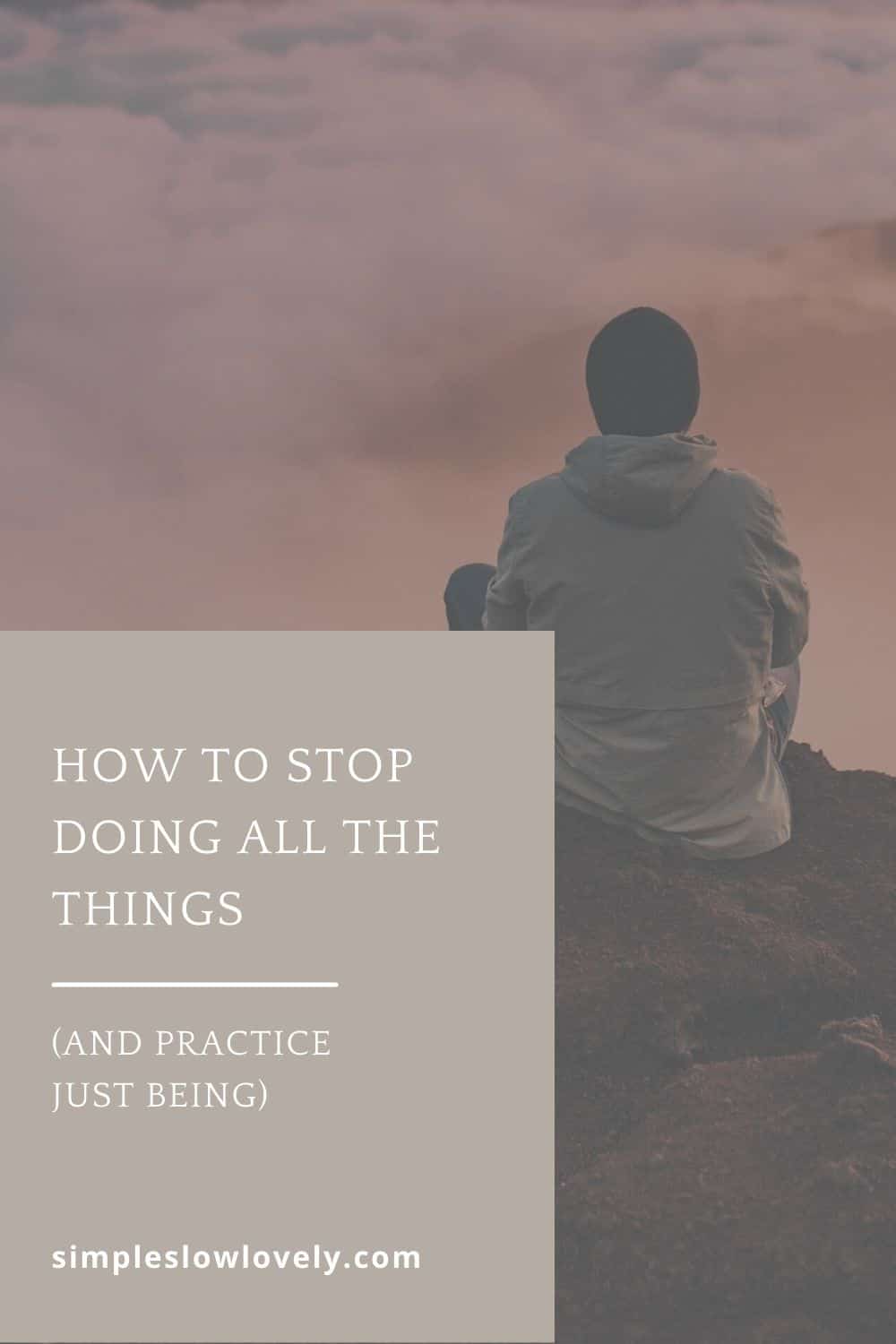I am often astounded at the energy levels of my two children. They seem to be constantly on the go, sitting still for long periods is definitely a struggle. When I mentioned this to a friend recently, her tongue-in-cheek reply was ‘oh yeah, and whose kids are they?’. And while many young children are like this, I can’t help but wonder if they are biologically wired for doing, just like their mum. And I can’t help but wonder how we stop doing all the things.
I am a doer. I struggle to sit and watch television, let alone sit and just be. It’s not in my nature. I get fidgety, particularly when I can see housework, washing, or one of my creative projects waiting. And on the odd occasion, I get to the bottom of the washing pile, and the floors are shiny, I still struggle to sit and just be.
The importance of practising just being
The truth is that we are never finished. There is always something else that could be done. There ain’t no lady waiting in the wings to sing. The show is never over.
So, if you are like me, a self-confessed overachiever and over-scheduler, this means there is never an opportunity for rest and relaxation. A chance to go slow and just be. But if you live like this for too long, burnout will come knocking.
Nothing is made to produce 24/7, 365 days a year. Think of the rhythms that were set out in the Bible or the Torah: the seventh day is set aside for rest; and the agricultural rhythm of setting aside the seventh year for the soil to rest. Look outside and observe the seasons. Nature doesn’t flourish in all her glory all year round. She stops and rejuvenates so that next spring she will flourish again, bigger and brighter than before.
If we don’t rest, we break. We wear out, rust and get chipped. The consequences of over-scheduled lives that are focused on production can be; fatigue, insomnia, irritability, anxiety, back pain, headaches, heartburn, and weight gain.
We need to rest a little every day if we want to avoid these and many other symptoms.
The consequences of inviting more stillness into our lives can be: increased productivity, enhanced self-awareness, emotion regulation, decreased rumination and depression, and increased positive emotion.
Just being can be uncomfortable though.
Try sitting in a chair for five minutes, doing nothing but sitting, and being. Notice what you feel. It can be a very uncomfortable and confronting exercise if you aren’t used to it.

How to stop doing all the things (and practice just being)
We need to inject more rest and just being still into our everyday. For stillness to have real benefits it needs to be regular and cumulative. And for those of us that struggle to just be, we may need to make an effort to form habits around stillness in order to really reap the benefits.
You might like to start with one of these three ways to invite more stillness into your life.
Pause
Micro-moments of stillness count. When you have a full day scheduled and a long to-do list, interject mini pauses between each task. You may need to go as far as writing ‘pause’ between each job on your list to remind you. You don’t need to do anything specific here, just simply stop, and be. Try starting with 10 seconds. It doesn’t sound like much but once you have the habit formed you can lengthen the time.
This micro-pause can benefit you physically (if your work is primarily sedentary) and mentally as you switch from one to the next.
Go inside
I don’t mean this literally. I’m talking about swapping external stimulation for internal. Much of our busyness and doing is created by external forces. We are given tasks by others, we see the external mess that needs attending too. Even our downtime is externally driven (social media, mainstream entertainment).
Switch off to the external world and take a few moments to inspect your internal world. What do you notice? Some days my internal world is very noisy and I feel ‘chased’ by all the ‘to-do’ monsters. Other days it’s a little quieter and I feel space and expansion. I don’t necessarily try to change my inner world, just paying attention is enough.
Keep a journal
As you slowly switch to more being and less doing, keep track of how you feel. Keep a journal of your progress. If you took three micro-moments today, write down how you felt at the end of the day. If you were overloaded and nonstop all day, make a note of how you feel. Actively noticing positive benefits from slowing down can provide you with the encouragement to keep going.
This practice also helps to serve as a gatekeeper. When you write something down you are strengthening the neurons that create memories. Your stronger memories of the benefits of being still will help you create and keep boundaries to stop you from chasing more doing.
Finally, stillness is a lost art in our modern world. It takes courage to step off the treadmill and stop. It’s counter-cultural and it’s not easy.
I want more stillness and comfort with just being, and I want to set an example for my children. There may be some genetic component to their tendency for busyness, but I’ll do my best to encourage quiet and stillness into their lives.
*Originally published at No Sidebar 1/3/2019



